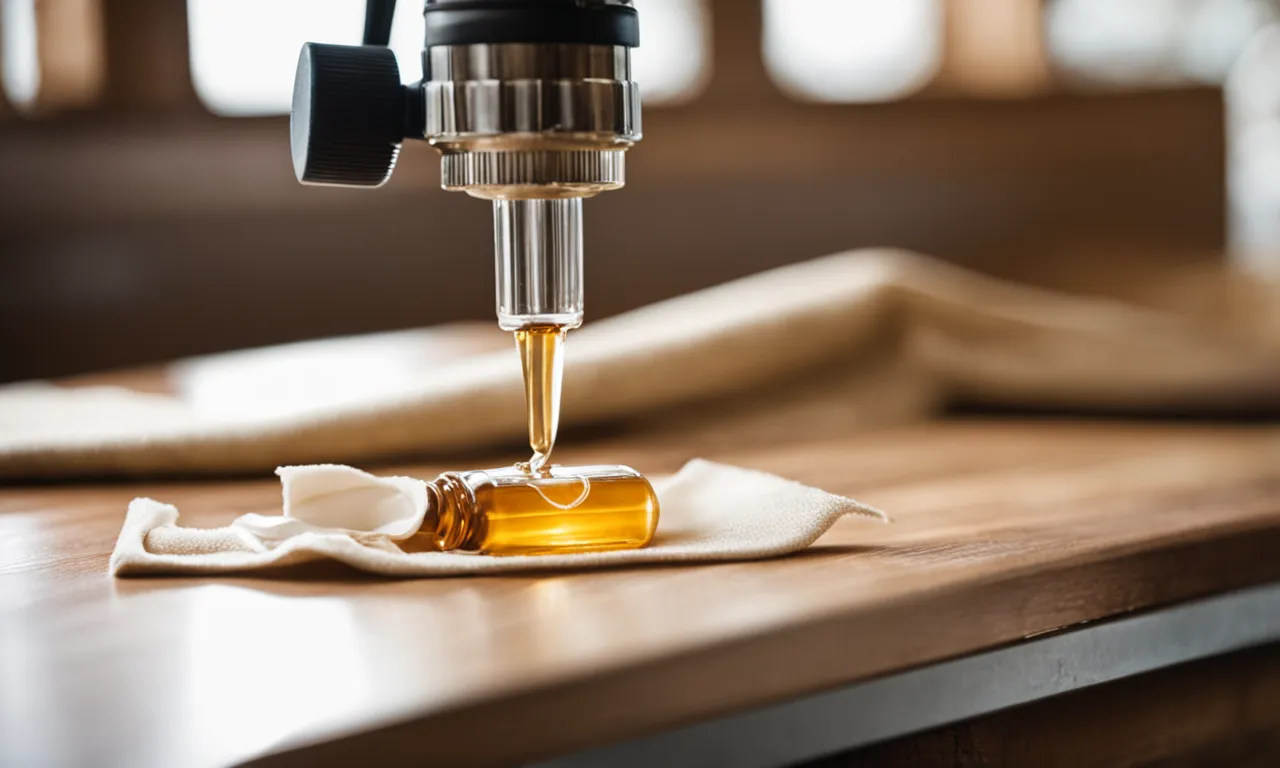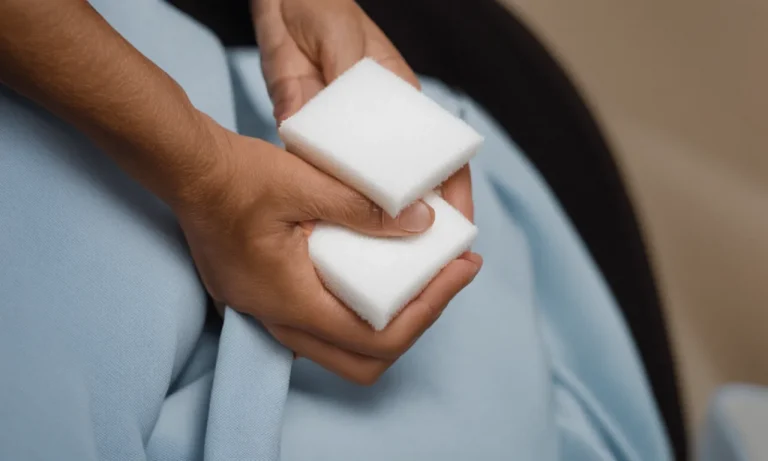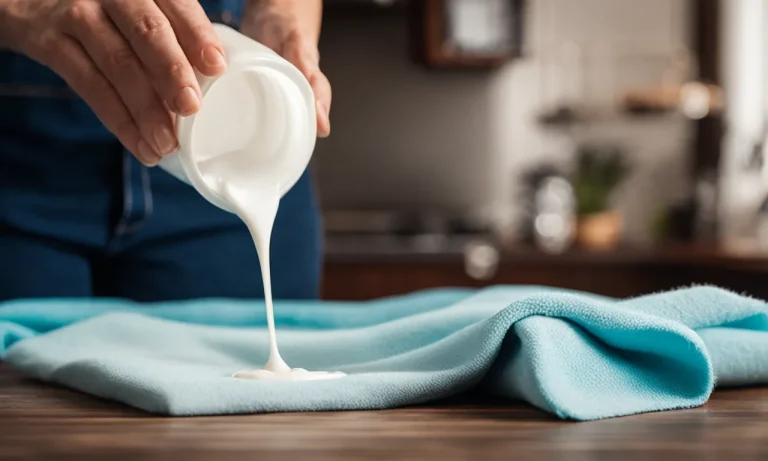Does Wood Glue Work On Fabric? A Detailed Guide
If you’re looking to mend a tear in your favorite shirt or pants, you may be wondering if wood glue will do the trick. After all, wood glue is designed to bond wood – not fabric. In this comprehensive guide, we’ll explore whether wood glue can be used on fabric and look at the pros and cons of this adhesive for clothing repair.
If you’re short on time, here’s a quick answer to your question: Wood glue can work on some types of fabric, but it’s not always the best choice. It may leave stiff, uncomfortable patches and is not ideal for stretchy or delicate materials.
How Wood Glue Bonds Materials
Wood glue is a versatile adhesive that is primarily designed for bonding wood together. However, it can also be used on other materials such as fabric, depending on the specific type of wood glue used and the nature of the project.
Understanding how wood glue bonds materials can help determine its effectiveness on fabric.
Strong adhesion from PVA formula
Most wood glues available on the market today are made from a type of adhesive called PVA (Polyvinyl Acetate). PVA glue is known for its strong adhesion properties and is commonly used in woodworking projects. When applied to wood, PVA glue seeps into the pores, creating a strong bond as it dries.
This adhesive strength is what makes wood glue an effective option for joining pieces of wood together.
When it comes to fabric, the adhesive properties of wood glue may not be as effective. Fabric is more flexible and has a smoother surface compared to wood, which makes it harder for the glue to penetrate and create a strong bond.
Additionally, PVA glue may not be designed to withstand the wear and tear that fabric goes through, such as washing or stretching.
While PVA glue may not be the best option for bonding fabric, there are specialized fabric glues available that are specifically designed for this purpose. These fabric glues have a different formulation that is better suited for fabric materials, providing a stronger and more durable bond.
Penetrates porous surfaces like wood
One of the reasons wood glue is so effective on wood is its ability to penetrate porous surfaces. Wood has natural pores that allow the glue to seep in and create a strong bond. These pores provide a larger surface area for the glue to adhere to, resulting in a more secure bond.
On the other hand, fabric is not porous like wood, and it does not have the same type of surface that allows wood glue to penetrate. This lack of porosity makes it more challenging for wood glue to bond with fabric effectively.
It’s important to consider the properties of the materials being bonded when choosing the appropriate adhesive. For fabric, it is recommended to use fabric glue or other adhesives that are specifically designed for textile materials.
These glues are formulated to provide a strong bond on fabric, ensuring that the adhesive withstands the rigors of washing, stretching, and other activities that fabrics commonly go through.
For more information on different types of adhesives and their applications, you can visit trusted websites such as The Spruce Crafts or Popular Woodworking.
Using Wood Glue on Fabric
Wood glue is a versatile adhesive that is commonly used for woodworking projects. However, you may be wondering if it can also be used on fabric. In this guide, we will explore whether wood glue works on fabric and what fabrics it works best on.
Works best on natural fabrics like cotton and linen
Wood glue can work well on natural fabrics such as cotton and linen. These fabrics have a more porous surface, allowing the wood glue to adhere effectively. When using wood glue on cotton or linen fabric, it creates a strong bond that can withstand regular wear and tear.
This makes it suitable for repairing fabric items like clothing or upholstery.
It is important to note that when using wood glue on fabric, it is recommended to apply it sparingly. Too much glue can result in a stiff and thick texture, which may not be desirable for certain fabric projects.
Not ideal for stretchy or delicate fabrics
While wood glue can work well on natural fabrics, it is not ideal for stretchy or delicate fabrics. Fabrics like spandex, silk, or chiffon have a different texture and elasticity compared to cotton or linen.
Wood glue may not adhere properly to these types of fabrics and can cause damage or discoloration.
If you need to repair or attach fabric items made from stretchy or delicate fabrics, it is best to use fabric glue or other suitable adhesives specifically designed for these materials. These adhesives are formulated to provide a flexible and durable bond without damaging the fabric.
Dries stiff and thick
One important thing to consider when using wood glue on fabric is that it tends to dry stiff and thick. This can affect the overall texture and flexibility of the fabric. If you are looking for a more flexible and pliable finish, using fabric glue or sewing may be a better option.
However, if you are working on a project where stiffness and thickness are not a concern, wood glue can be a viable option for bonding fabric. It is important to test a small, inconspicuous area of the fabric first to ensure that the wood glue does not cause any damage or discoloration.
Application Tips and Tricks
Use very small amounts
When using wood glue on fabric, it is important to remember that a little goes a long way. Applying too much glue can result in a messy and uneven application. Instead, use small amounts of glue and spread it evenly on the fabric using a brush or a small spatula.
This will help ensure that the glue adheres properly without creating a bulky or stiff texture on the fabric.
Let it fully cure before washing
After applying wood glue to fabric, it is crucial to allow it sufficient time to cure before washing. The curing time can vary depending on the type of wood glue used, so it is recommended to check the manufacturer’s instructions.
Typically, it can take anywhere from a few hours to a few days for the glue to fully cure. Patience is key in this process, as rushing it may result in the glue not bonding properly with the fabric.
Consider reinforcing with patches
If you are working with a fabric that requires extra strength or stability, such as a heavy-duty fabric or one that will be subjected to a lot of stress, it may be wise to reinforce the glued area with fabric patches.
These patches can be cut to the desired shape and size and then glued onto the fabric along with the wood glue. This double-layered approach can provide added durability and ensure a stronger bond between the fabric and the glue.
Remember, even though wood glue can be effective on fabric, it is always a good idea to test it on a small, inconspicuous area of the fabric first to ensure compatibility and desired results. Additionally, following the manufacturer’s instructions and recommendations is crucial for achieving the best outcome.
Alternatives to Wood Glue for Fabric Repair
Fabric glue
Fabric glue is a popular alternative to wood glue when it comes to repairing fabric. It is specifically designed to bond fabrics together, making it a reliable choice for fabric repairs. Fabric glue is easy to use and dries quickly, allowing you to complete your repairs in no time.
It is also flexible and durable, ensuring that your fabric stays intact even after multiple washes.
One highly recommended fabric glue is Aleene’s Original Fabric Glue. It has been trusted by crafters and DIY enthusiasts for years and has a strong bond that can withstand heavy use. You can find this product at most craft stores or online.
Liquid stitch products
Liquid stitch products are another great alternative to wood glue for fabric repair. These products come in a tube and are applied directly to the fabric. They work by creating a strong bond that holds the fabric together.
Liquid stitch products are ideal for small repairs and can be used on a variety of fabrics, including denim, cotton, and polyester.
One popular liquid stitch product is the Aleene’s Original Liquid Stitch. It is a fabric adhesive that dries clear and is machine washable. This product is great for quick fixes and can be found in most fabric stores or online.
Iron-on adhesive patches
If you’re looking for a more permanent solution to repair fabric, iron-on adhesive patches are a fantastic option. These patches are made of fabric with adhesive backing, and they can be easily applied to the damaged area using an iron.
The heat from the iron activates the adhesive, creating a strong bond between the patch and the fabric.
Iron-on adhesive patches are available in various sizes, colors, and patterns, making them a versatile choice for fabric repairs. They are commonly used to repair holes, tears, or worn-out areas on clothing, bags, or upholstery.
One well-known brand for iron-on adhesive patches is Bondex. They offer a wide range of patches that can be customized to match your fabric. You can find Bondex patches in most fabric stores or online.
Remember, when using any adhesive product on fabric, it’s essential to follow the instructions carefully to ensure proper application and long-lasting results. Always test the adhesive on a small, inconspicuous area of the fabric before applying it to the visible damaged area.
For more information and tips on fabric repair alternatives, you can visit websites like The Spruce Crafts or Martha Stewart.
Conclusion
In summary, wood glue can work as a quick fix for minor tears in some types of sturdy, natural fabric. However, it may not be the most flexible or long-lasting solution. When repairing delicate fabrics or stretchy material, specialized fabric adhesives will provide a better bond.
Be sure to test wood glue in an inconspicuous area first and take care not to use more than necessary. With some trial and error, wood glue can be handy for extending the life of well-loved cotton and linen clothing.







